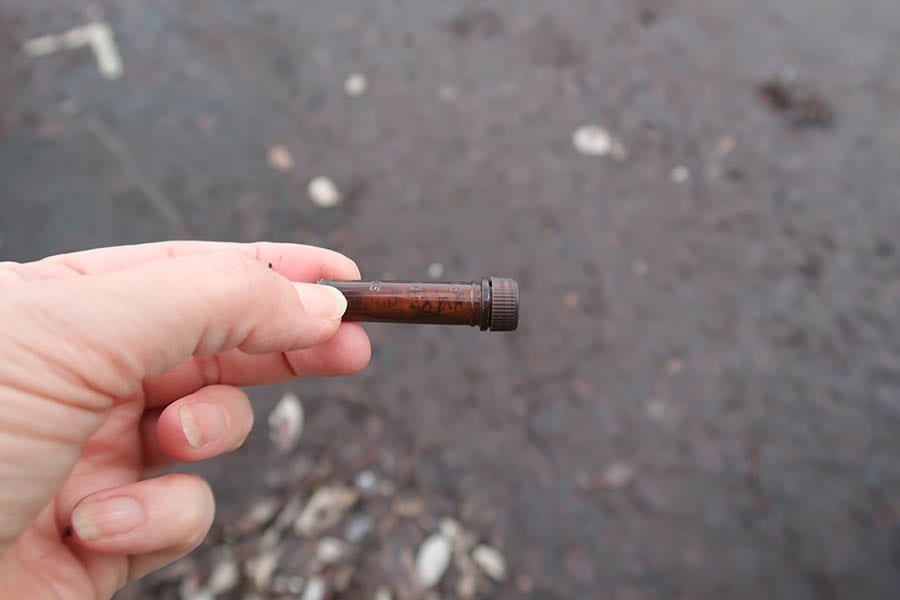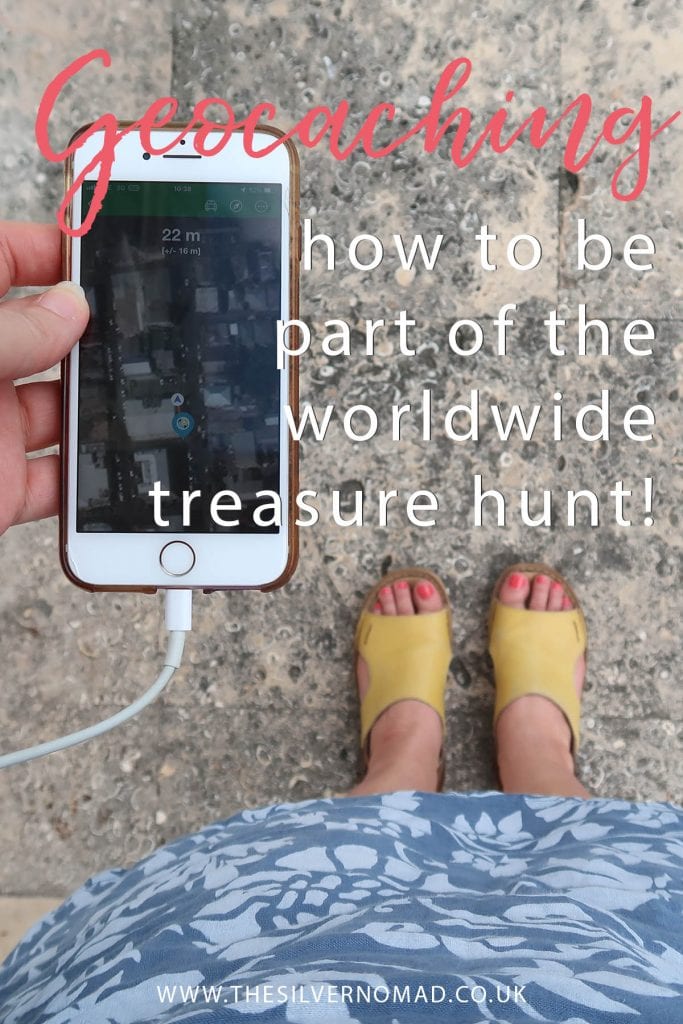Do you Geocache? Do you even know what Geocaching is? I must admit I was completely oblivious until reading about looking for geocaches on the Isle of Man in August. A quick Google, a download of the geocaching.com app and I was hooked!
What you can expect in this post:
*This site uses affiliate links and I may earn a small commission when you use my links and make a purchase without incurring an additional fee yourself.
Thank you for supporting this website. See my disclaimer page for more details.
What is Geocaching?
The best way I can describe Geocaching is that it is like a worldwide treasure hunt with millions of hidden caches all over the globe. Cachers hide a container called a geocache, then list the co-ordinates, a description and a hint on the geocaching.com website. Players use either the GPS on the Geocaching phone app or any other GPS device to find it.
Sometimes there are objects or trinkets in the geocache, which you can swap for an item of the same value or greater. There should always be a log to sign.

It is a great way to explore a place you are visiting, or just get to know your own town or city. Instead of staring at a computer screen indoors, geocaching gets you out into the fresh air and using your brain. Even though you may spend time looking at your phone, you will normally be outdoors.
Sounds simple? Well, these cache hiders can be quite fiendish and sometimes you have to solve puzzles, work out clues or search for holders which can be minute, camouflaged or secreted in weird places. Caches are always hidden but never buried.
I have found caches behind signposts (magnetic ones are a favourite for this), in a birdbox, hidden in a cave in Barbuda, up a tree in the UK and even inside a book in Swindon Library. For EarthCaches (see below), I have looked at shells in paving slabs, rock formations and other geological phenomena in Antigua.

How did Geocaching start?
Geocaching started in May 2000 in Oregon and will celebrate its 20th anniversary in 2020. Twenty years ago, there were only 75 known caches worldwide. Now in 2019, over 3 million caches are hidden in cities, towns and in the countryside in over 190 countries around the world.
So far, I have found caches in England, Scotland, the Isle of Man, Barbuda and Antigua. I do try to get a few everywhere I go.

Who can Geocache?
Anyone! It doesn’t matter your age, sex, race, religion, anyone can geocache, though some might be unsuitable for people with disabilities. Geocaches are rated by difficulty and terrain. A terrain rating of 1 to 1.5 should be accessible for wheelchair users. For more information look on the website.
Getting started
The first thing to do is download the app which is available for both iPhone and Android. There are slight differences between the two versions, but they will not affect performance. The app is available in over 20 different languages.

There are two levels of geocaching, Basic and Premium. The Premium version costs around $29.99 for a year. This gives you access to all the geocaches, the ability to make lists and advanced searches as well as other features. With the free version, the caches available are limited and while you can see the Premium ones, they are greyed out.
Your First Geocache
Start with a geocache nearby, preferable a traditional one (see below). Check the Description for clues and if you need to bring anything, like a pen or tweezers (or wellies!).
Have a quick look at the Hint. Then click on Navigate to see how close you are to the cache, and off you go.
The navigation takes you to the geocache, give or take 4-6 metres though I have found most of them are pretty accurate. Try not to be too obvious about looking, or too furtive!
What if you don’t find the cache?
It can be so frustrating when you can’t find a cache, especially if the clue has been cryptic. Keep looking, up, down and round about. Read or reread the Activity logs as they might give you extra hints, like “Easy for someone tall!“. If you can’t find it, you can record it as a DNF or come back at a later date and try again.
Geocache Etiquette
Once you find your first cache, you might be a bit excited, (I have been known to do a little dance when I have found one) but is important to remember a few things.
- Remember to sign and date the log in the cache
- If you are talking a trinket or object, leave one of the same or greater value
- Make sure the cache is closed properly
- Replace where you find it
- Log your find on the app or online
- If you are leaving a comment, don’t leave a spoiler or photo of the cache
Geocaching Terms and Types
Geocaching Speak
BYOP, DNF, GZ, TFTC???? What do all these mean? I have noticed that there are shorthand codes peppering the Descriptions, Hints and the Activity. Some are quite easy to work out, but others have really foxed me. Here is a guide to some of the more common ones:
- BYOP – Bring Your Own Pen/Pencil
- DNF – Did Not Find
- GZ – Ground Zero (where the cache is located)
- TFTC – Thanks For The Cache (normally in Activity)
- TNLN – Took Nothing, Left Nothing
- TNLNSL/TNSL – Took Nothing, Left Nothing, Signed Log/Took Nothing, Signed Log
- BOT – Base of Tree
- FTF – First to Find – accolade given to the first person to find a cache
- Muggle – this has been adopted from the Harry Potter books to refer to non-cachers
- for a full list see the Geocaching Glossary
The Different Types of Geocache
On the app, you will see several different symbols for the caches. Let me explain the main ones:
Traditional Geocaches
These are the most common geocaches you will see. They come in differing sizes from micro to quite large containers. The smallest may only hold a log but larger ones can have items to trade or trackable items.

Mystery or Puzzle Caches
For all of you who really love puzzles and mysteries, these geocaches can tax your brain. From finding dates to counting window panes, lights, words, there are so many conundrums to solve to work out the coordinates

Multi-Cache
The multi-caches take you to two or more different locations. The first location will give you a clue to where the second clue is. This continues until you find the last stage and the physical container.

EarthCache
An EarthCache marks a place that is of special geological interest. The descriptions are educational and give information about the geological processes that lead to the formation. They have a physical location, but not an actual cache. To earn these caches you normally have to give answers to questions about what you can see and maybe how it has been formed and your observations.
For more information visit EarthCaches

The smiley face is awarded on the Geocaching app once you have logged a successful find of a cache.

You should now be ready to go looking for your first geocache. Happy hunting!
I am so happy that you are interested in GeoCaching. If you happen to find my business card in a cache or if you have any questions or wish to share your own Geocaching adventures, please comment below!
Don’t forget to pin this article so you can come back to it later





I have several friends who geocache, yet I have not downloaded the app yet. I plan to join the worldwide treasure hunt in 2020, many thanks to this article. Thank you for encouragin our family to join the fun!
Thanks, Amy, I hope to get over to the Netherlands to geocache there!
Geocaching is so much mun, some of my friends do it all the time but never abroad.
Happy new years from Stcokholm Sweden!
Thank you Ann! I hope to get to Stockholm to try Geocaching there!